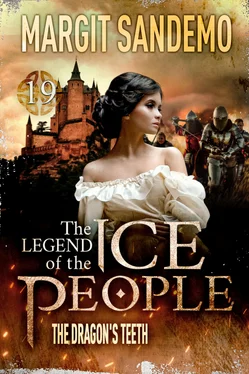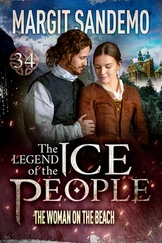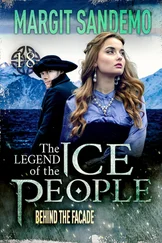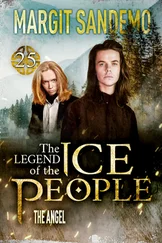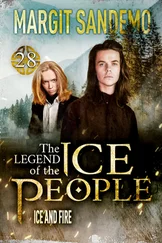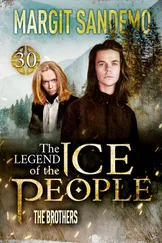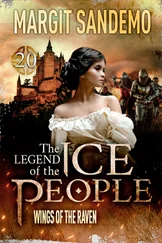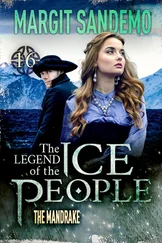The Dragon's Teeth
The Legend of the Ice People 19 - The Dragon's Teeth
© Margit Sandemo 1984
© eBook in English: Jentas A/S, 2017
Series: The Legend of The Ice People
Title: The Dragon´s Teeth
Title number: 19
Original title: Drakens tänder
Translator: Nina Sokol
© Translation: Jentas A/S
ISBN: 978-87-7107-553-3
This book is sold subject to the condition that it shall not, by way of trade or otherwise, be lent, resold, hired out, or otherwise circulated without the publisher’s prior consent in any form of binding or cover other than that in which it is published and without a similar condition, including this condition, being imposed on the subsequent purchase.
All contracts and agreements regarding the work, translation, editing, and layout are owned by Jentas A/S.
Acknowledgement
The legend of the Ice People is dedicated with love and gratitude to the memory of my dear late husband Asbjorn Sandemo, who made my life a fairy tale.
Margit Sandemo
The Ice People - Reviews
‘Margit Sandemo is, simply, quite wonderful.’
- The Guardian
‘Full of convincing characters, well estabished in time and place, and enlightening ... will get your eyes popping, and quite possibly groins twitching ... these are graphic novels without pictures ... I want to know what happens next.’
- The Times
‘A mixure of myth and legend interwoven with historical events, this is imaginative creation that involves the reader from the first page to the last.’
- Historical Novels Review
‘Loved by the masses, the prolific Margit Sandemo has written over 172 novels to date and is Scandinavia s most widely read author...’
- Scanorama magazine
The Legend of the Ice People
The legend of the Ice People begins many centuries ago with Tengel the Evil. He was ruthless and greedy, and there was only one way to get everything that he wanted: he had to make a pact with the devil. He travelled far into the wilderness and summoned the devil with a magic potion that he had brewed in a pot. Tengel the Evil gained unlimited wealth and power but in exchange, he cursed his own family. One of his descendants in every generation would serve the Devil with evil deeds. When it was done, Tengel buried the pot. If anyone found it, the curse would be broken.
So the curse was passed down through Tengel’s descendants, the Ice People. One person in every generation was born with yellow cat’s eyes, a sign of the curse, and magical powers which they used to serve the Devil. One day the most powerful of all the cursed Ice People would be born.
This is what the legend says. Nobody knows whether it is true, but in the 16th century, a cursed child of the Ice People was born. He tried to turn evil into good, which is why they called him Tengel the Good. This legend is about his family. Actually, it is mostly about the women in his family – the women who held the fate of the Ice People in their hands.
Chapter 1
Dragon seed, Ulvhedin had predicted in a moment of gloominess. The Ice People are like dragon seed.
He was thinking of the legendary Greek hero who slew a dragon and sowed its teeth, whereupon an army of soldiers immediately sprang from the ground.
Everyone assumed that the Ice People had managed to shed their curse after Shira’s amazing feat. No children in the subsequent generation had been born with the curse – Elisabet, Sölve, Ingela and Arv – so perhaps that meant they were just four perfectly splendid young people?
Ulvhedin knew better.
He knew that Shira had merely laid the groundwork for the obliteration of the curse. She had discovered the clear waters of life that had the capacity to dissolve the effect of the water of evil that Tengel the Evil had buried. Now they needed to find the place where he had hidden the water, and they had to do that before he was resuscitated.
It had been a sobering realization for Ulvhedin and all his kin.
Except that the others didn’t take it very seriously, because they assumed that the curse had been lifted.
Ulvhedin was the only one who knew that the dragon’s teeth had borne fruit.
This is the story of the cursed one whose fate most closely resembled that of Trond, Are’s son, long, long before. Trond had not displayed any external signs of being cursed. He was a perfectly ordinary young man who had not even suspected anything himself at first. But Tengel the Good, his grandfather, had noticed it. Now and then he had seen a yellow glint in Trond’s eyes, had seen fragments of the cursed legacy of the Ice People deep in the boy’s soul.
It had been war, murders and bloodshed that awakened his evil disposition.
The fate of his kinsman, many years later, was to unravel quite differently. But they had one thing in common: no one in their immediate circle had any suspicion of what they were concealing in their souls.
Daniel’s children, Sölve and Ingela, were two good-looking siblings. They were dark, with lively colouring and deep brown eyes, quick-witted, happy and sociable. Their grandmother Ingrid was proud of them, and rightly so.
When they were children they had heard the story of the Ice People and their curse. But it did not interest them all that much. They lived a sheltered life with their mother and father, not far from the beautiful estate of Skenäs in Vingaaker in Sweden, to which Göran Oxenstierna had moved in his old age. They lived in a perfect idyll of peace.
Göran Oxenstierna, who – together with Dan and Daniel – had fought in the battle of Villmanstrand in Finland and had been injured there, lived to be a very old man. He had married Countess Sara Gyllenborg, who was twenty-seven years his junior and the daughter of one of the members of the State Council. Together they had four sons, two of whom would come to play a role in the lives of Sölve and Ingela, the children of Daniel Lind of the Ice People. One was Axel Frederik, but when this story begins he was still too young to have any influence on what happened. The other was his oldest brother, Johan Gabriel, who at an early age was already displaying exceptional talents.
Johan Gabriel Oxenstierna, who to this day is celebrated in Swedish literary history, was a dreamer. He was unusually sensitive and gifted. In his youth he began to write short poems, which he would read aloud to his friends Sölve and Ingela but otherwise kept to himself.
He also kept a diary that was just as romantically composed as the poems, and both soon began to concentrate on a central theme: a certain Themir, who was actually the housekeeper at Skenäs and whose real name was Anna Kinvall. Johan Gabriel was fifteen years old; she was twenty-three. At this point both the diary and the poems overflowed with joyful love and sheer bliss. And they were filled with secrets to which only Sölve, who was a year older than his friend, was privy.
Ingela, who was two years younger than Johan Gabriel, was upset by his infatuation with Anna Kinvall, because Ingela herself was a little in love with him. But there was no way that Ingela was ever going to let him know about it! She was a very proud girl, and she could never hope to marry Johan Gabriel Oxenstierna because she was not of noble birth. Her feelings grew into a bittersweet love from a distance, and she refused to know the extent to which Johan Gabriel’s infatuation with Anna Kinvall remained mere infatuation and nothing more.
Sölve had a completely different nature. Carefree and outspoken, he made friends easily, out-going and straightforward as he was.
But deep within him other features of his character lay hidden.
He was twelve years old when he first became aware of them ...
He and Ingela had been up at Skenäs playing with the boys. There had been a party. It was Johan Gabriel’s eleventh birthday and many people had been gathered there, both young and old.
Читать дальше
